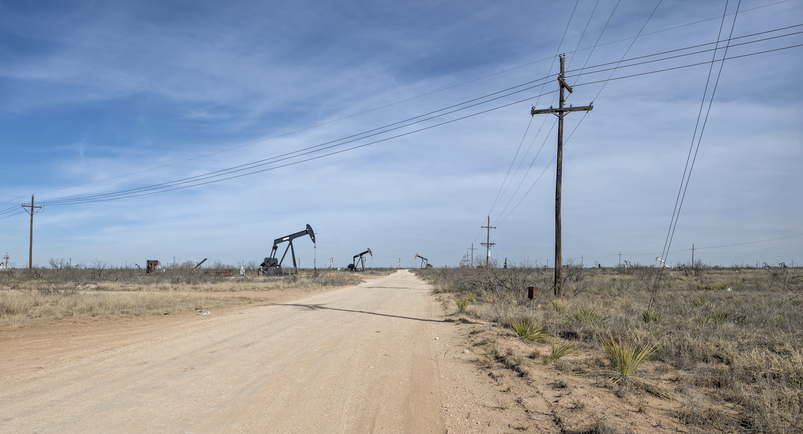Seven Implications Operators Need to Know About the New Chapter 4 Regulations
On July 1, 2025, the Texas Railroad Commission (RRC) implemented a comprehensive revision to the regulatory framework governing oil and gas waste management. This update replaces Statewide Rule (SWR) 8 (16 TAC §3.8) with 16 TAC Chapter 4, Subchapter A. It is the most significant change to oilfield waste rules in four decades.
The new rule consolidates, modernizes, and expands existing provisions—including components of SWR 57—and introduces new compliance requirements that will affect generators, transporters, and receivers of oil and gas waste across Texas.
B3 Insight has reviewed the updated regulatory language in detail. Below is a structured summary of key provisions, implications for Texas operators, and regulatory milestones.
1. Manifesting, Monitoring, and Mass Balance Are Now Mandatory Waste Characterization and Documentation Requirements
Applicable Sections: §4.108, §4.190–4.195
- All oil and gas waste must be characterized in advance of transport using the new RRC “Waste Profile Form” or equivalent documentation.
- When waste is transported by vehicle to an off-lease facility, a manifest system (paper or electronic) is mandatory.
- The generator, transporter, and receiver must each retain manifests or equivalent electronic records for three years.
- Waste moved by pipeline is exempt from manifest requirements but must be tracked via mass balance accounting.
Implication: Operators will need systems in place to ensure accurate, timely, and auditable waste characterization and manifest handling. The RRC has stated that electronic forms and filing systems will be required where available.
2. Pits Are No Longer Just Pits—They’re Now Regulated Infrastructure
New Classifications, Setbacks, and Closure Rules
Applicable Sections:§§4.113–4.115
Pits are now classified into Schedule A (e.g., reserve, workover, makeup water pits) and Schedule B (produced water recycling pits). Both categories require registration (not a permit) if located outside the 100-year floodplain.
Schedule A Pits
- Liners are mandatory if TDS exceeds 3,000 mg/L or groundwater is <50 ft below.
- Hydraulic conductivity threshold: ≤1.0 x 10⁻⁷ cm/sec.
- Closure: Dewater, backfill, compact.
Schedule B Pits
- May be located off-lease.
- Must meet setback requirements from water wells, public areas, and floodplains.
- Require double liners with leak detection (unless emptied and inspected annually).
- All non-commercial pits must either be registered or closed by January 1, 2026.
- New pits constructed after July 1, 2025, must register with the RRC (electronic system forthcoming by 2027).
Implication: Operators using on-lease and off-lease pits must evaluate current practices for compliance with new liner, location, and financial assurance standards. Unregistered legacy pits must be addressed in the near term.
3. Disposal Without a Permit? Only in Specific, Low-Risk Cases
Strict Limits and Conditions on Unpermitted Disposal
Applicable Sections: §4.111
Land application of water condensate or low-chloride drilling fluids (<3,000 mg/L chloride) is allowed without a permit, but only if specific environmental and operational conditions are met. Requirements include:
- Setback compliance (≥300 ft from surface water, ≥500 ft from public water systems).
- pH control, depth limits, and hydrocarbon thresholds.
- Waste-soil mixture limits on EC and TPH content.
Implication: While limited exemptions exist, most disposal operations will still require formal permitting or registration. Operators relying on land application must carefully document procedures and verify compliance.
4. Recycling Opportunities Expand Under Clearer Regulatory Framework
Produced Water and Solids Recycling
Applicable Sections: §4.112, §4.212 et seq.
Operators may recycle produced water without a permit under specific conditions:
- Recycling must be for use in an oil, gas, geothermal, or service well
- Activities must comply with §4.113 and §4.115 (recycling pit standards).
- Recycling is limited to oil and gas waste; or
- Treated fluid is used under a permit from another state or federal agency.
Permitting frameworks for solid and fluid recycling now follow a tiered structure:
| Recycling Type | Location | Permit Term |
| Solid, on-lease | Roadbase reuse | 1 year |
| Solid, off-lease | Centralized facilities | 2 years |
| Solid, stationary | Fixed-site facility | 5 years |
| Fluid, off-lease | Centralized | 2 years |
| Fluid, stationary | Fixed-site facility | 5 years (renewable) |
Implication: While the RRC is promoting recycling, regulatory obligations are non-trivial. Site-specific data, financial security, and stakeholder notice are required. Short-term operations may remain exempt only under narrow use cases.
5. Two New Pressure Points: Notice & Hauler Permits
Notice Provisions for Permitted Applications
Applicable Sections: §4.125, §4.141
Applicants must provide direct mail notice to:
- Surface owners (subject tract and within 500 ft).
- Adjacent landowners.
- Municipal officials (if inside city limits).
- The RRC District Office.
- Recipients have 30 days to protest
For commercial disposal applications, two weeks of newspaper publication is also required.
Implication: Early stakeholder engagement will be critical to avoiding delays. Protests can trigger hearings and delay permit issuance.
6. Produced Water from Out-of-State? Expect More Paperwork
Transportation and Cross-Jurisdictional Rules
Applicable Section: §4.193
- Any entity transporting waste for hire (non-pipeline) must obtain a waste hauler permit.
- Beginning December 31, 2026, inter-agency transfers (e.g., RRC to TCEQ or vice versa) must be reported to the Commission.
- Waste originating outside of Texas and transported to Texas by truck for disposal must have its origin accurately identified and possession of the waste must be tracked.
Implication: Midstream and third-party water logistics firms should ensure hauler permits are current and establish tracking systems for transboundary waste.
7. Drill Cuttings and Beneficial Reuse
Applicable Sections:§§4.301–4.302
Treatment and beneficial use of drill cuttings is allowed under permit for:
- Road pad construction.
- Other engineered products that meet environmental and engineering equivalency standards.
Applicants must demonstrate commercial market viability and non-polluting characteristics of the product.
Implication: Reuse options are expanding, but must be validated through permit-specific documentation. Potential use cases should be planned well in advance.
Strategic Considerations for Texas Operators
The updated Rule 4 regulations reflect a broader trend: increased pressure on surface and subsurface waste management systems, driven by:
- Rising formation pressures and seismic risk.
- Increased scrutiny of SWD practices.
- Plateauing injection capacity in saturated zones.
These regulatory shifts carry direct implications for permitting timelines, injection planning, and risk exposure. At the same time, they represent a positive step toward modernizing waste management standards, reducing environmental risks, and providing greater regulatory clarity for long-term planning. By aligning operational practices with updated expectations, operators can build more resilient and sustainable water management strategies.
If you would like a customized compliance briefing or to see how Chapter 4 changes intersect with your current water strategy, contact the B3 Insight team.

